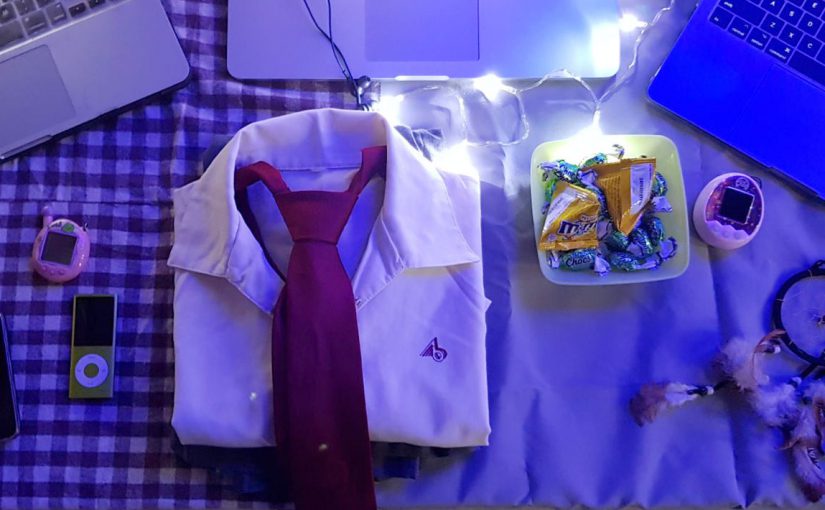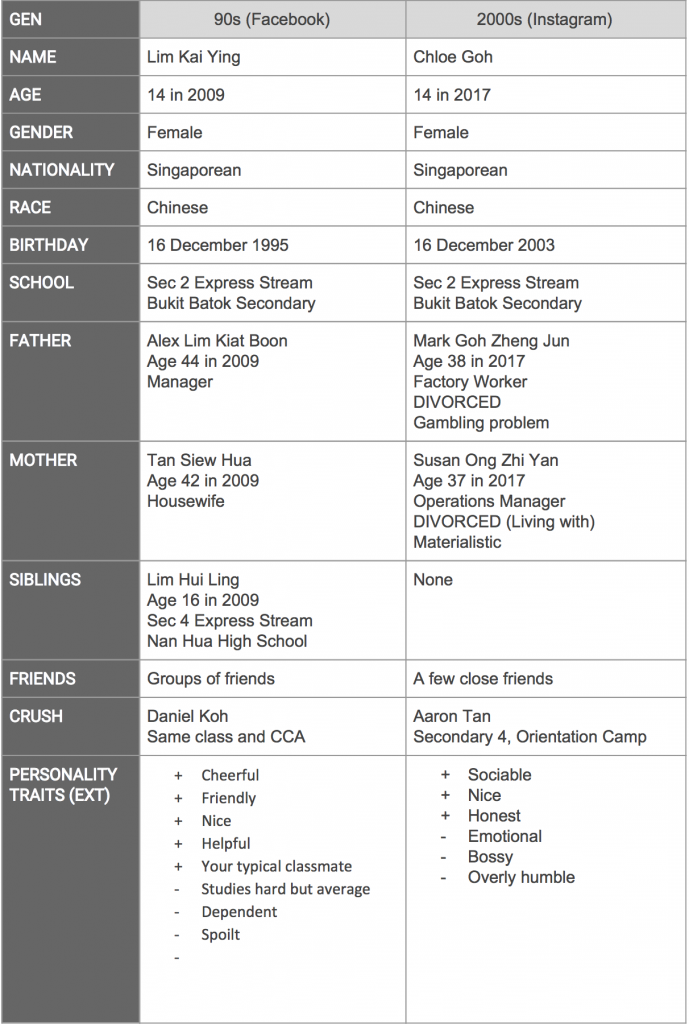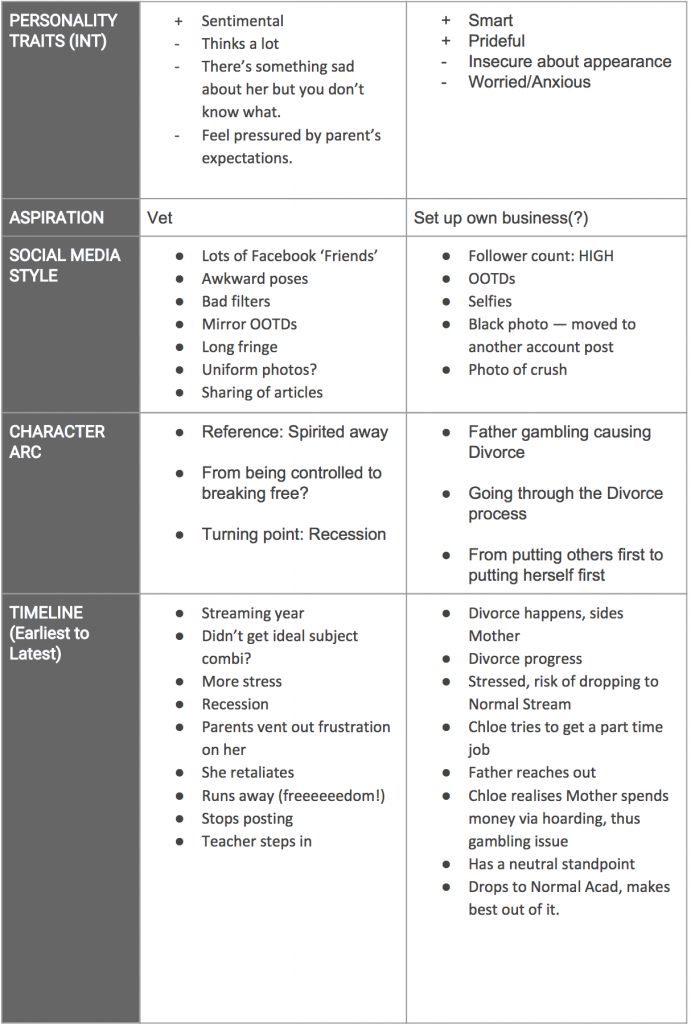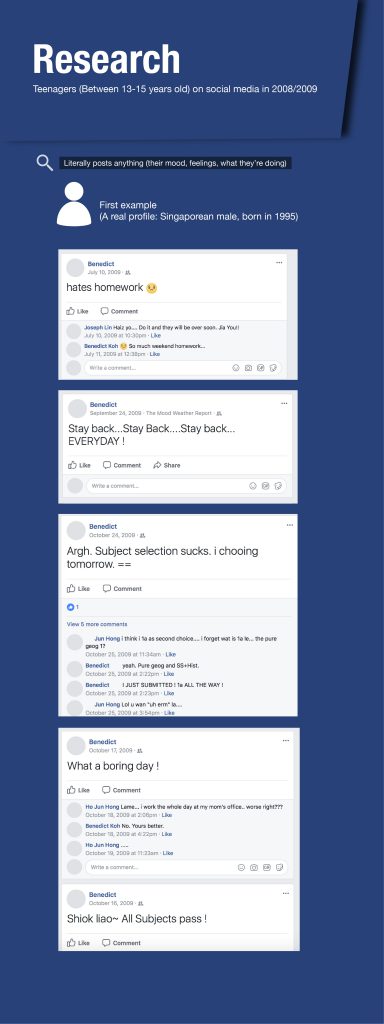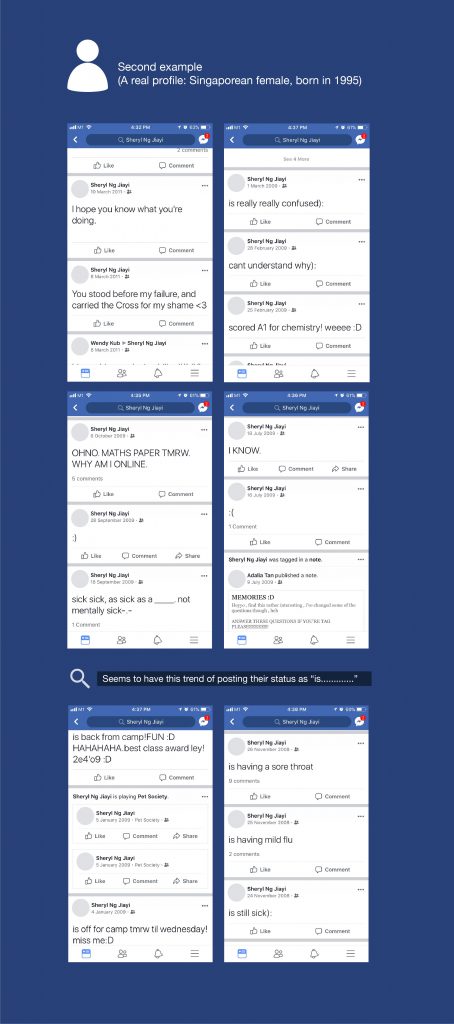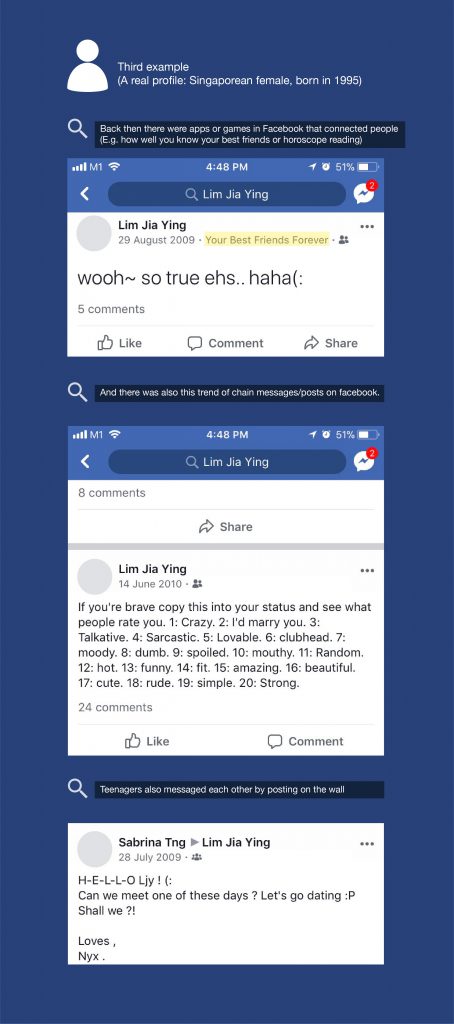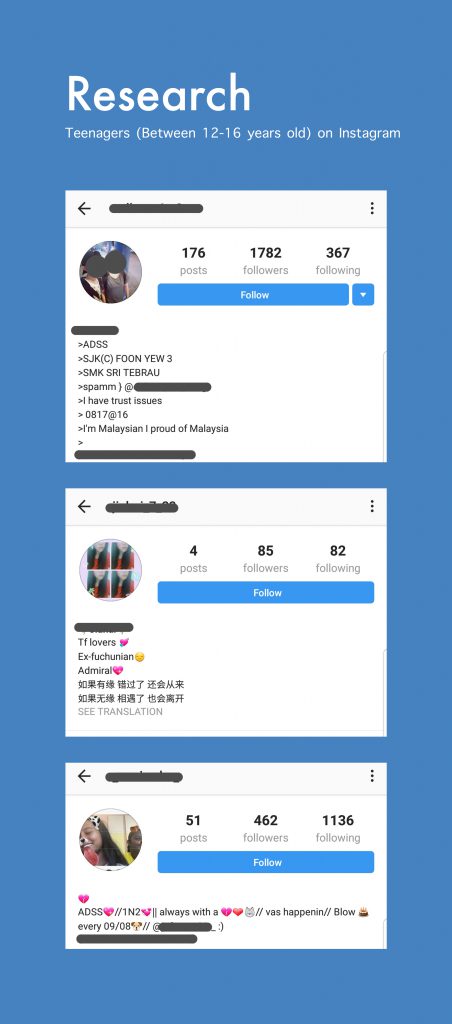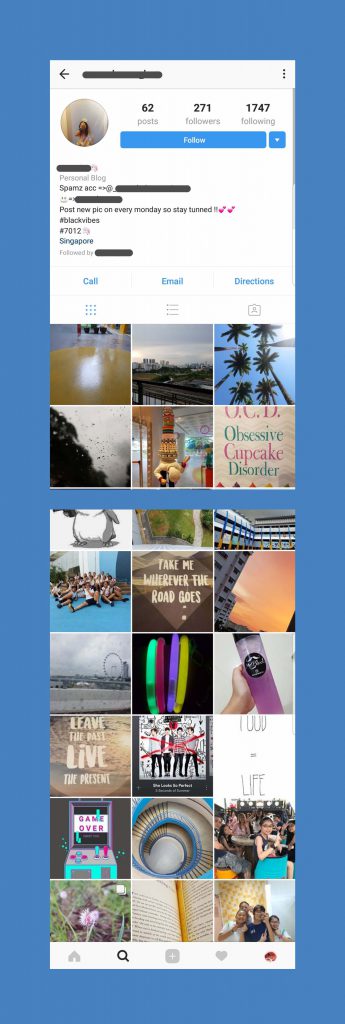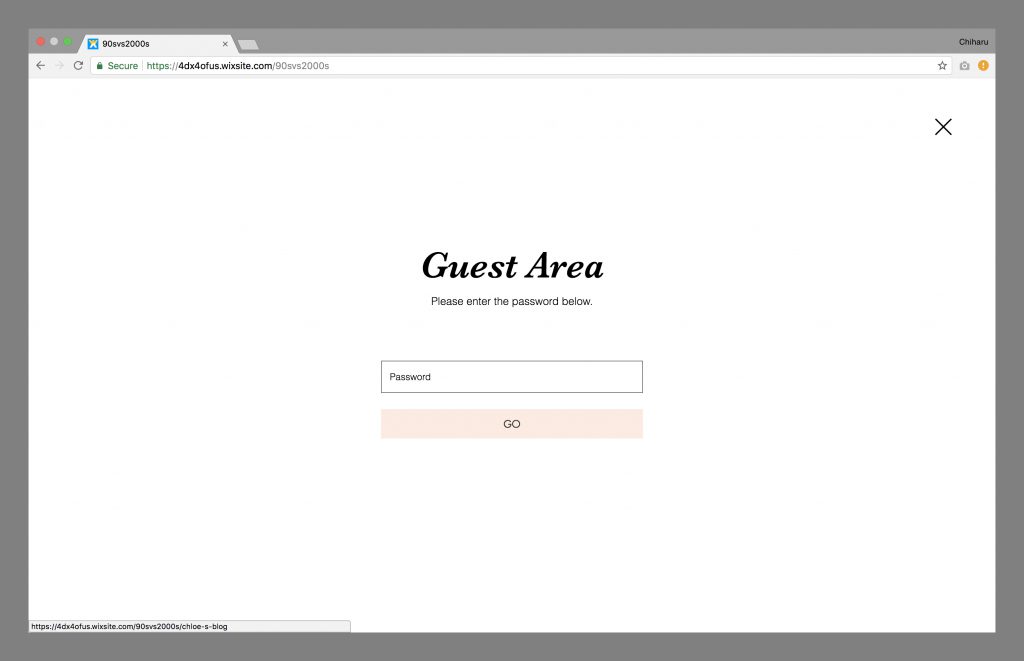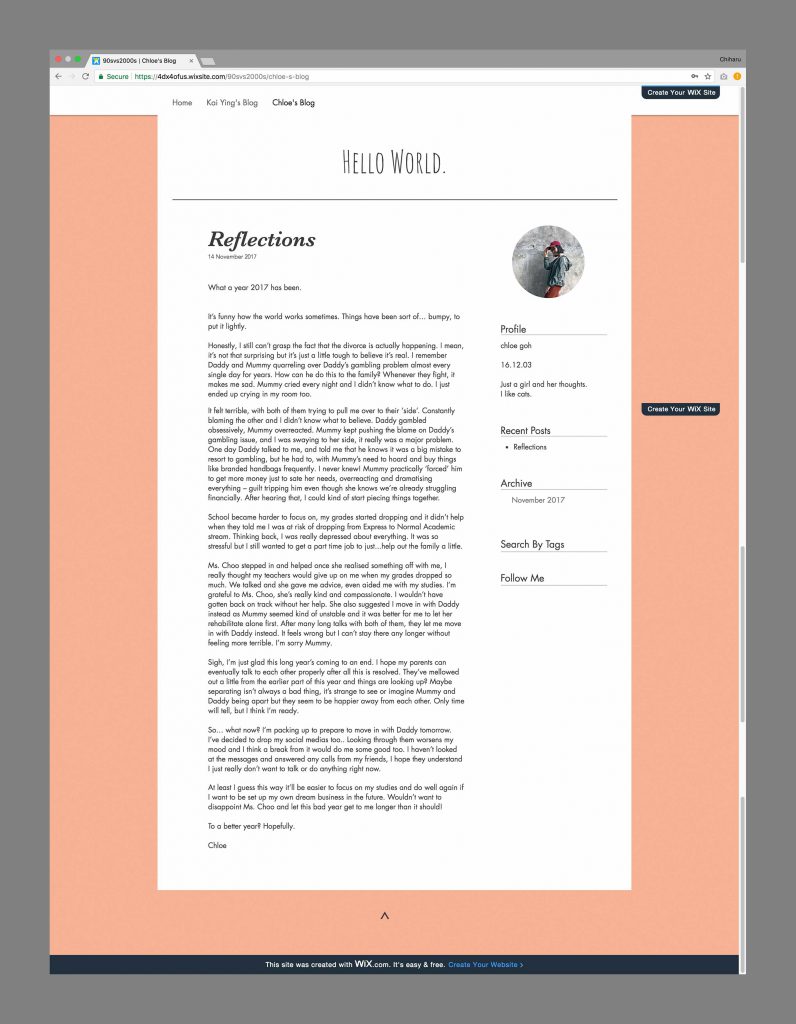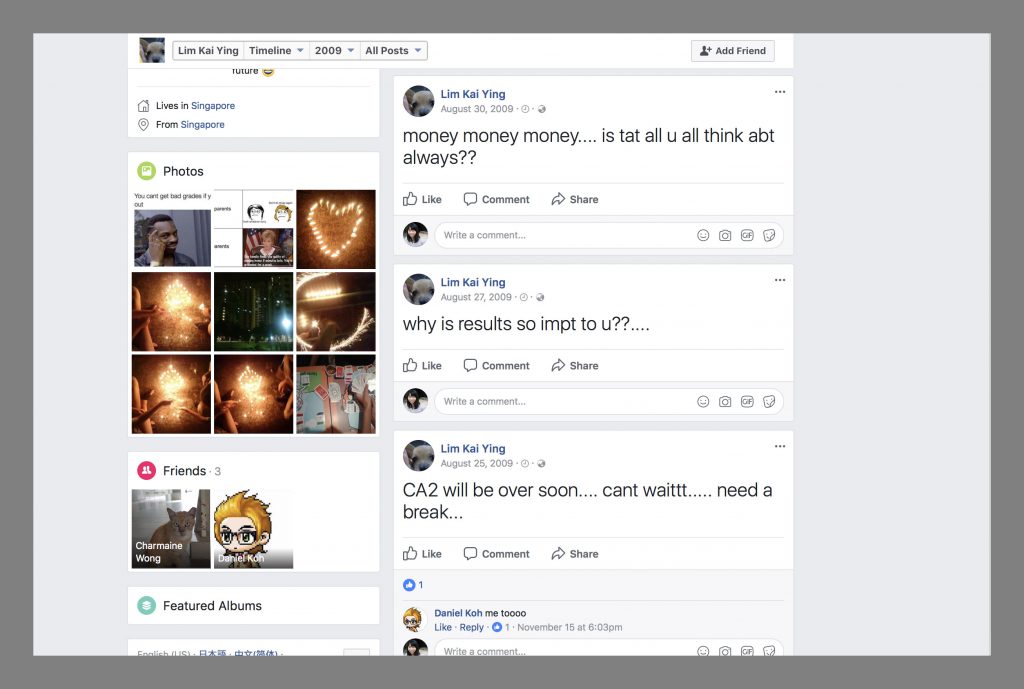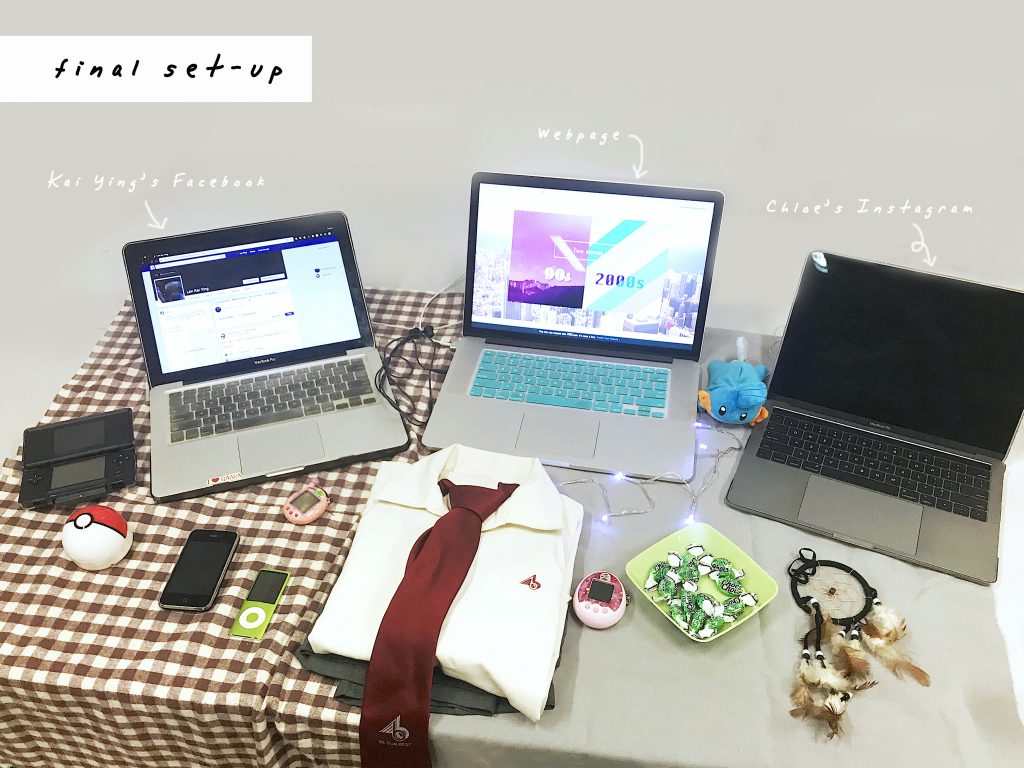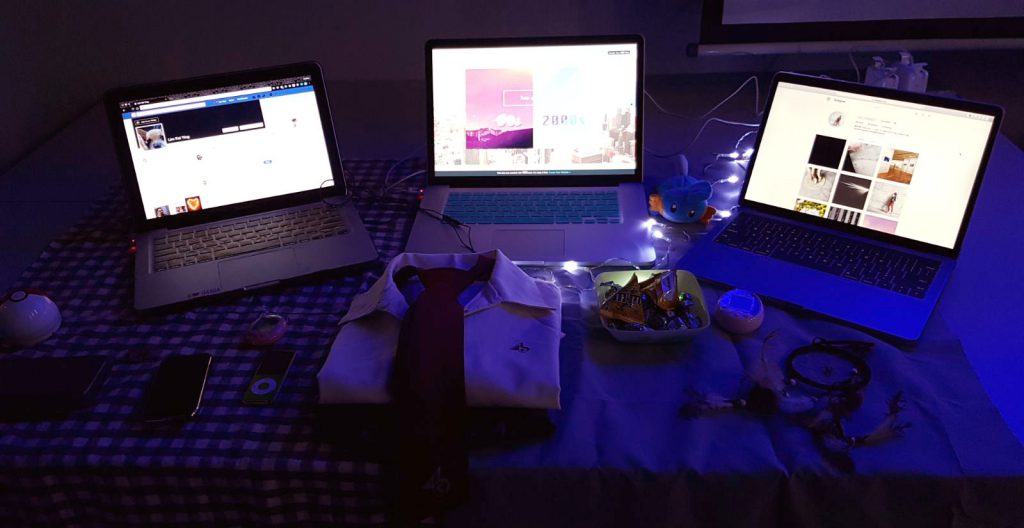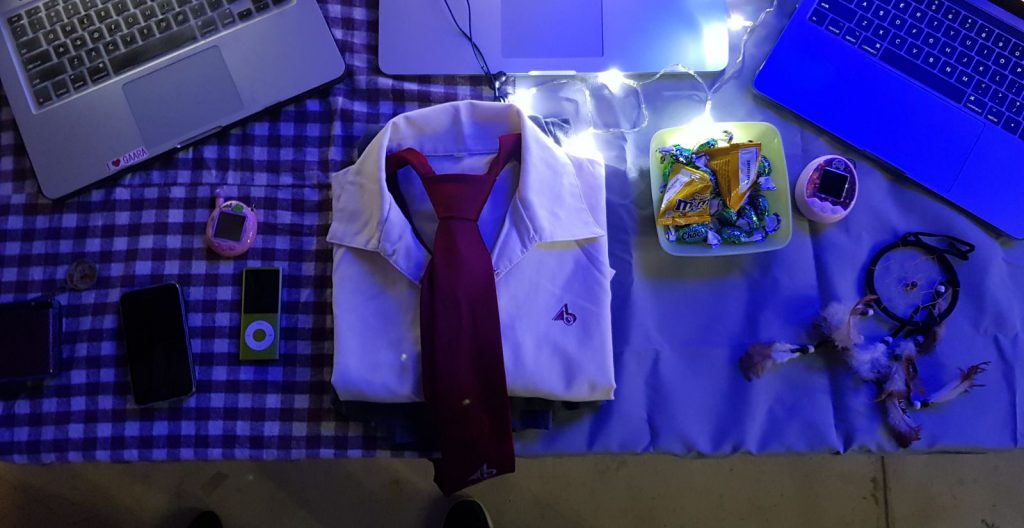Chiharu | Christina | Naomi | Yi Ting
About
We wanted to explore the possibilities of storytelling through the use of social media and digital space. Social media is something that most people can relate to — especially people in our age range. Using similar storylines, we decided to do a comparison of someone born in the 90s and someone born in the 2000s, and explore how characters of different time periods may react to similar situations.
+ LINKS at the end.
Character profiling & Story
The first step was to create their respective character profiles. In the beginning, we came up with characters that were too stereotypical with not much depth. But after consultation, we rethought their personalities and the things they might post. We thought of their character arcs and the problems that they might face in their respective eras. External and internal personality traits/emotions were also something that we considered.
After we settled their personalities, we worked on their stories and the rough timelines of each platform.
Problems faced by both characters are generally common problems a teenager in Singapore might face, such as stress from streaming year, financial difficulties, gambling, quarrelling parents etc.
Research
We then proceeded to do some research on the posting habits of people to make the posts look authentic. We took note of language used, and the extent of information that people usually reveal in their postings.
For Instagram posts, we took note of what sort of photos and captions are posted. Some information are censored for privacy reasons.
website
This was used as a platform to tie in the entire project. The audience should view this website before proceeding to view the content on the social media, or they’ll be confused. The homepage includes audio narrations to ease the audience into the narrative. It also includes the respective character profiles, and instructions on what to do.
AUDIO
As we worked on our project, we began to realise the limitations of digital spaces. We wondered if visuals on a screen was really enough to connect with the audience. Hence, we decided to include audio as part of the character storylines.
Kai Ying’s:
Chloe’s:
Blogs
The character’s blogs are used to reflect their internal emotions. Audience needs to view both their blogs and social media in order to get the full story. The blogs can be accessed through the main website. The design of both blogs is carefully thought out. Kai Ying’s blog design is one reminiscent of blogs belonging to actual 90s kids. It is something that people can relate to. Chloe’s blog follows the minimalistic, modern design.
The blogging styles of the girls are determined by their personalities and time period. The language used by Kai Ying is very informal with a bit of Singlish, whereas Chloe’s use of language is a little more formal.
Chloe’s blog is a little special because the audience would need a password in order to access it. The password is hidden in her Instagram post. We made sure that the keyword used is not to difficult, and relates to her problem. It appears multiple times in her Instagram posts if you pay attention.
Social media platforms
We picked Facebook for the 90s kid as it is one of the most used social media platforms by people in the age age. The photos/posts are carefully curated and posted by Christina and Naomi. Posts are very informal and includes a lot of acronyms and short forms.
Instagram is the most used social media platform for a kid born in the 2000s hence we decided to use it for Chloe. We needed someone who looks like a 14 year old to act as Chloe, and thankfully Rebecca agreed to help us with this! We borrowed Christina’s old uniform and took a bunch of photos to add to the Instagram timeline. We also got Rebecca to use some of her personal photos with friends, in order to make the posts look authentic. Then, the photos were meticulously chosen and arranged by Yi Ting. The arrangement was especially important, because what they post reflects the character’s inner workings too. In Chloe’s case, she starts out happy and normal — so she posts quite a few photos of her smiling. As the problems in her life escalates, she is stressed and depressed, hence the posts are of random objects accompanied by moody captions.
Layout
Since our project focuses more on digital space, we kept the physical space simple. We laid out the laptops with the websites and social media opened. We then decorated the surroundings with items from our childhood to go along with our theme of the 90s and 2000s. Though initially not intended, the lighting coming from Jun Ming’s group’s project matched our theme as well and worked beautifully for us.
Links
Website: https://4dx4ofus.wixsite.com/90svs2000s
Kai Ying’s blog: https://4dx4ofus.wixsite.com/90svs2000s/blog
Kai Ying’s Facebook: https://www.facebook.com/fourd.xfourofus.5
Chloe’s blog: https://4dx4ofus.wixsite.com/90svs2000s/blog
Chloe’s Instagram: https://www.instagram.com/not_chloe03/
(password: money)

